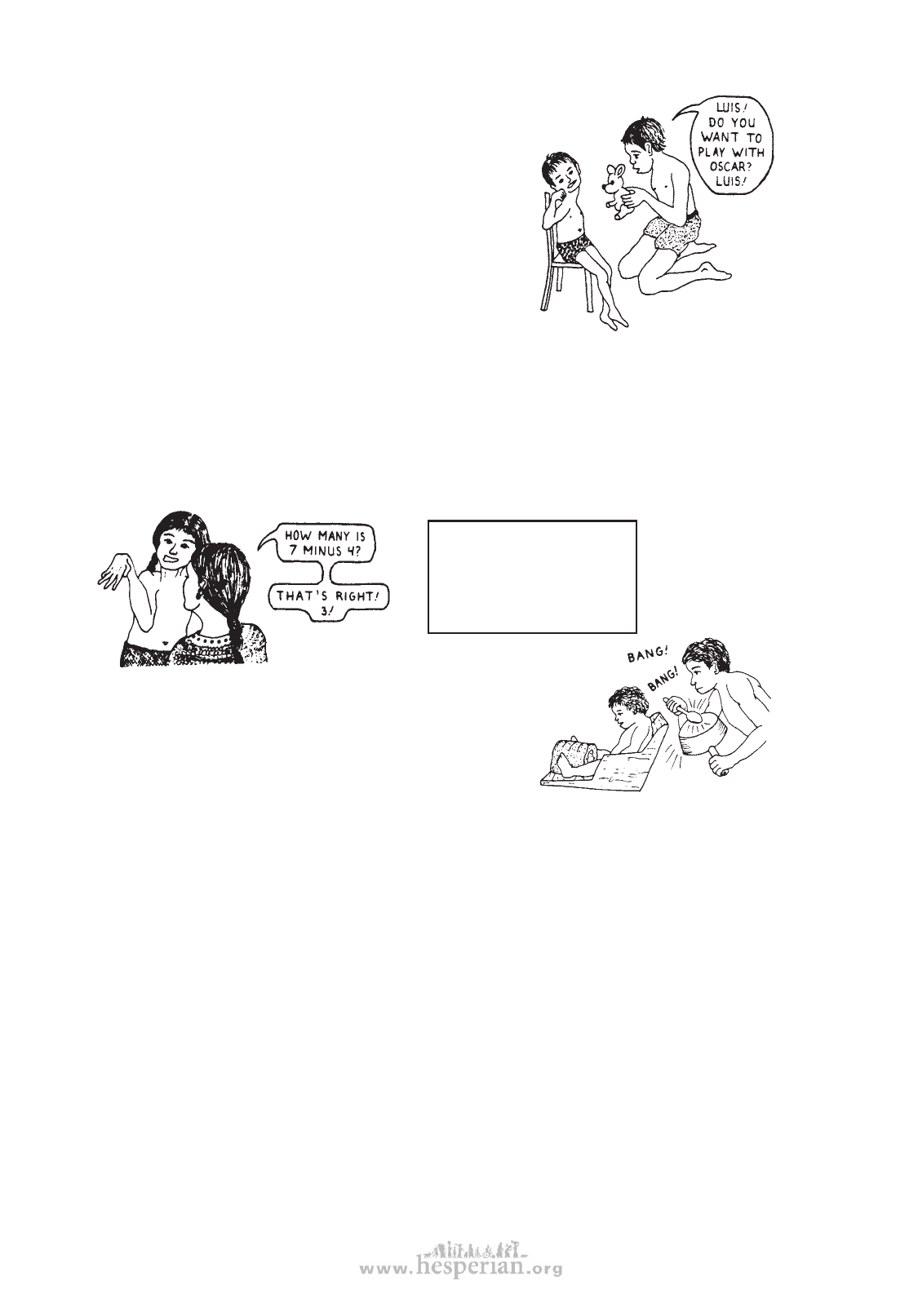
88 chapter 9
• Communication difficulties The baby may not
respond or react as other babies do. This may
partly be due to floppiness. stiffness, or lack of
arm gestures, or control of face muscles. Also,
the child may be slow in beginning to speak. Later
some children develop unclear speech or other
speaking difficulties.
Although parents find it hard to know exactly
what the child wants, they gradually find ways
of understanding many of his needs. At first the
child cries a lot to show what he wants. Later he
may point with his arm, foot or eyes.
• Intelligence Some children may seem dull because they are so limp and slow
moving. Others move so much and awkwardly they may appear stupid. Their faces
twist, or they may drool because of weak face muscles or difficulty swallowing. This
can make an intelligent child appear mentally slow.
About half of the children with cerebral palsy are mentally slow, but this should not be
decided too soon. The child needs to be given help and training to show what she is really
like. Parents can often tell that she understands more than she can show.
With help and training,
some children who
have been considered
mentally slow prove to
be quite intelligent.
• Hearing and sight are sometimes affected. If this
problem is not recognized, the family may think
that the child lacks intelligence. Observe the child
carefully and test him to find out how well he can
hear and see. (See p. 450 to 453.)
• Seizures (epilepsy, fits, convulsions) occur in some
children with cerebral palsy. (See Chapter 29.)
Even if a child can hear loud banging,
he may not hear well enough to
understand words.
• Restless behavior Sudden changes of mood from laughing to crying, fears, fits of
anger, and other difficult behavior may be present. This may partly be due to the
child’s frustration of not being able to do what he wants with his body. If there is too
much noise and activity the child can become frightened or upset. The brain damage
may also affect behavior. These children need a lot of help and patience to overcome
their fears and other unusual behavior. (See Chapter 40.)
• Sense of touch, pain, heat, cold, and body position are not lost. However, the
children may have trouble controlling movements of their bodies and trouble with
balance. Because of their damaged brains they may have difficulty learning these
things. Patient teaching with lots of repetition can help.
• Abnormal reflexes Babies have certain ‘early reflexes’ or automatic body
movements that normally go away in the first weeks or months of life. In children
with brain damage, they may last much longer. However, these are only important
if they affect how the child moves. ‘Knee jerk’ and other tendon-jump reflexes
are usually over-active (jump higher than normal). If you are not sure, testing for
abnormal reflexes may help you tell cerebral palsy from polio. (See p. 40.)
Disabled village Children